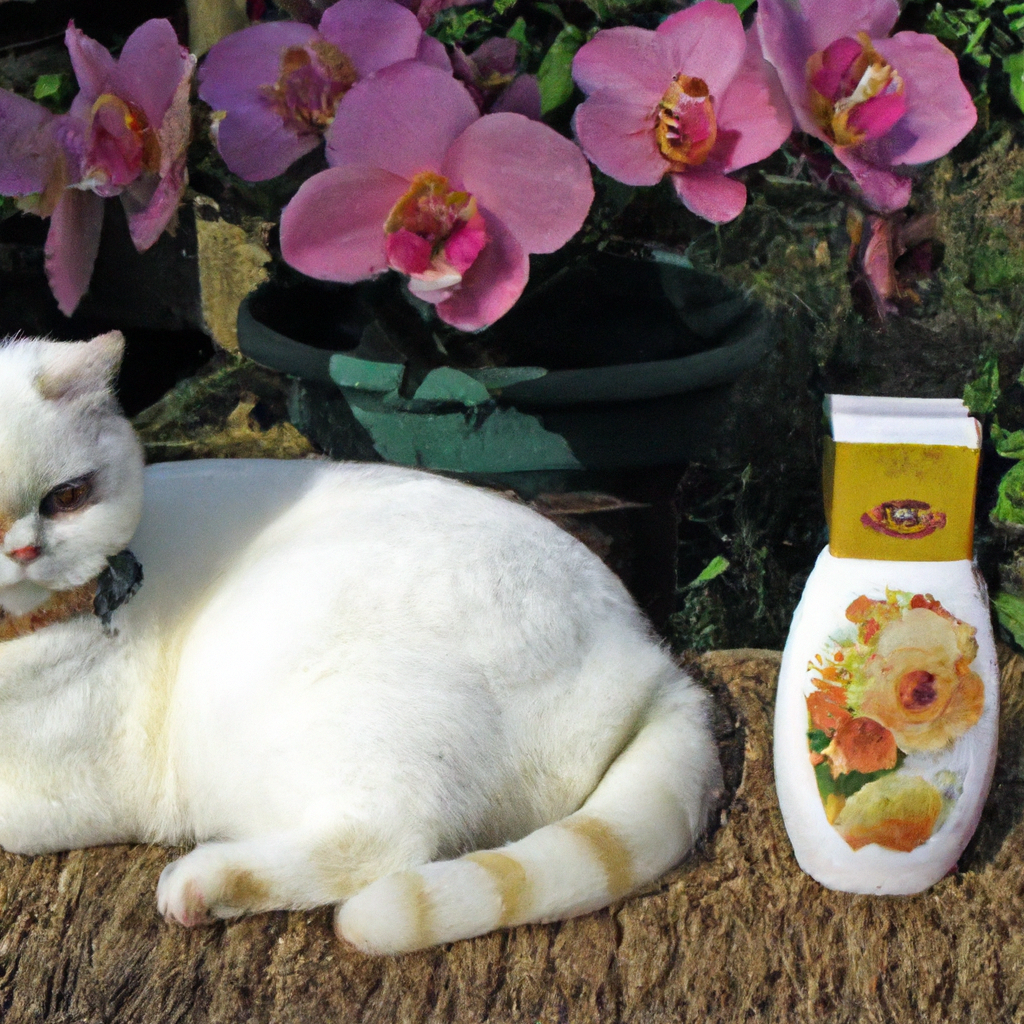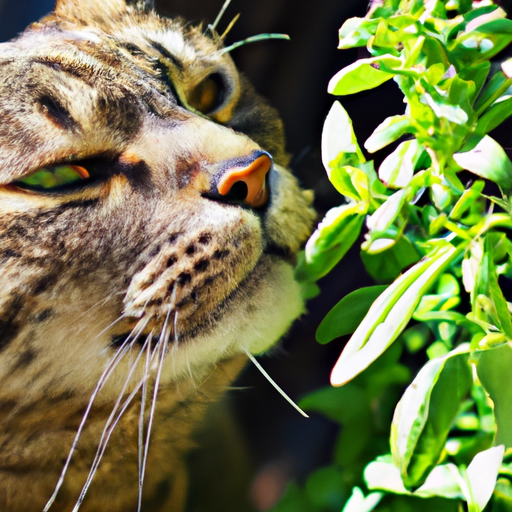How To Keep Cats Away
Picture this: you’re enjoying a peaceful morning in your flower garden, relishing the sight of fresh blooms and the scent of earth when, out of nowhere, a feline visitor makes an unexpected appearance, leaving chaos in its wake. “How to keep cats away” is here to equip you with effective deterrent methods to keep those cunning cats at bay. In this guide, you will uncover tactics from the most unassuming everyday items to crafty homemade repellents. Proceed, if you’re ready to protect your sanctuary from those furry intruders.

Understanding Cat Behavior
Before you can effectively keep cats away, you first need to understand their behavior. Cats are complex creatures with their own set of instincts and habits. Let’s dissect some of these behaviors to get a better understanding of why cats may be intruding on your private spaces.
Identifying territorial nature of cats
Cats are immensely territorial animals. They have a strong instinct to mark their territory and establish boundaries. This behavior becomes more evident when there are several cats in an area, each trying to establish its domain. You may often see ungainly cat fights as a result of boundary disputes.
Understanding scent marking behavior
Cats mark their territories using a method called scent marking. They have scent glands in their cheeks, paws, and other parts of their body, which they rub against objects to leave behind their personal fragrance. This is their way of communicating to other cats that a particular territory is already claimed.
Recognizing cat’s hunting instincts
Another aspect of cat’s behavior is their hunting instincts. They are natural hunters and may be attracted to your area due to the presence of small mammals or birds. If you see cats lurking around suspiciously or pouncing without obvious reasoning, it could be an indication of this instinct kicking in.
Noting attraction towards certain plants and smells
Interestingly, cats are also attracted towards certain plants and smells. The most well-known among these is catnip. However, they also enjoy the smell of lavender, geranium, and roses among others, so be wary if these plants are in your garden.
Using Physical Barriers
Let’s move onto some actual tactics you can implement to keep cats away. Physical barriers can be one of the most effective ways to deter cats from your premises.
Installing fences or walls
Installing a fence or wall might seem like an excessive measure, but its effectiveness makes it worth considering. Cats are nimble climbers, so any barrier would need to be fairly tall and smooth to prevent them from getting over it.
Using netting to protect garden
You might also use netting to cover and protect your garden, particularly if you’re trying to keep cats away from specific plants. This method is often used by gardeners and proves quite effective.
The effectiveness of water sprinklers
Water sprinklers can be another effective deterrent. cats dislike getting wet, so having a sprinkler system activated on sensing motion can discourage them from entering the premises.
Application of motion-activated devices
Speaking of motion-activated devices, there are also other contraptions like sonic devices, rotating objects or lights that can serve to scare away cats. Not to mention these devices can offer an added layer of security to your home as well.
Implementing Plant Deterrents
In addition to physical barriers, there are also plant deterrents you can implement.
Potency of plants cats dislike
Just as cats are attracted towards certain plants, they also dislike certain others. These include plants such as rue, lavender, and marigolds. Strategically planting these around your property can act as a natural repellent.
How to use citrus peels and coffee grounds
cats possess a heightened sense of smell and disliked the scent of citrus and coffee grounds. You can scatter these in your garden or other areas where cats frequent to deter them.
The role of rosemary and thyme
Rosemary and thyme are two other plants that cats stay clear of. By planting these around your garden, you can discourage cats from exploring your property.
Considerations when planting rue
One potent cat deterrent is the rue plant. However, it’s also toxic to humans when consumed, and can irritate the skin upon contact. So if you’re considering using rue, make sure to plant it in areas inaccessible to children and wear gloves while handling it.
Creating Homemade Cat Repellents
For those that prefer a more hands-on approach, creating homemade cat repellents might just be your thing.
Mixing vinegar and water solution
A popular homemade repellent consists of vinegar and water. Cats dislike the strong smell of vinegar and so, spraying a diluted solution strategically can help deter them.
Using essential oils
Certain essential oils like eucalyptus or citronella are also known to repel cats. However, some essential oils can be toxic to cats, so be sure to research and choose only safe ones.
Creating pepper-based repellents
Another option is a pepper-based repellent. The spicy smell of pepper irritates a cat’s nose, deterring them from the area where it’s applied.
Understanding why these repellents work
These repellents work by exploiting cats’ sense of smell. Whether it’s vinegar, essential oils, or pepper, these smells are highly offensive to cats, causing them to avoid areas where these are applied.

Buying Commercial Cat Repellents
If homemade solutions aren’t your cup of tea, then there are a plethora of commercial cat repellents available in the market.
Exploring ultrasonic devices
Ultrasonic devices are great for those seeking a non-invasive and safe option. These devices emit a high-frequency sound that’s uncomfortable for cats but inaudible to the human ear.
Comparing granular and liquid repellents
Should you opt for granular or liquid repellents? Granular repellents can be scattered around the target area, while liquid ones can be sprayed. Both work by emitting strong fragrances that keep cats away. The choice between the two often depends on your preference and the specific requirements of the target area.
Reviewing repellents with predator scents
Certain repellents use the scent of predators to scare off cats. These usually contain ingredients like Nonanal or Coyote Urine, and can be especially effective in areas with high cat activity.
Determining safe ingredients
When buying commercial repellents, it’s vital to check for safe ingredients. Make sure the product you choose is non-toxic and safe for pets and wildlife in case of accidental ingestion or exposure.
Implementing Scare Tactics
Scare tactics can serve as a great way to deter cats from your property. Just like human beings, unfamiliar or surprising stimuli can freak out cats too.
Understanding how unfamiliar noises scare cats
cats can be startled by unfamiliar noises. By using devices that emit sudden loud noises, you can frighten cats, discouraging them from coming back in the future.
Using aluminum foils
Aluminum foils can also work as a deterrent due to their crinkly noise and shiny appearance. You could lay sheets of foil in problem areas or wrap them around surfaces to deter scratching.
Effectiveness of human hair or dog fur
Surprisingly, both human hair and dog fur can serve as effective cat deterrents. The scent of these can be off-putting to cats, making them think twice before venturing into your property.
Proper placement of scare tactics
Remember, the effectiveness of these tactics largely depends on their placement. Place them where cats usually enter or hang around your property.
Training Your Own Cat
While most of the methods we’ve discussed are related to deterring stray or foreign cats, you might be dealing with trouble from your own pet. Here are some things you could do:
Teaching your cat territory boundaries
Training your cat to understand territory boundaries can go a long way in keeping them from venturing into off-limits areas. This involves consistent training sessions and a lot of patience.
The training process
Begin by observing your cat’s habits and identifying problematic behaviors. Address them by redirecting their attention or providing them with alternatives.
Using positive reinforcement
Just like most animals, cats respond well to positive reinforcement. Treats, petting, and praise can encourage your cat to follow the rules you’ve set.
Addressing behavior issues
Any behavior issue that persists despite your best efforts should be addressed by a professional. It might indicate an underlying health or behavior issue that requires expert intervention.
Dealing with Stray or Feral Cats
Stray or feral cats can present a problem to your property as well. It’s important to understand the difference between the two and deal with them accordingly.
Understanding the difference between stray and feral cats
Stray cats are domesticated cats that have been abandoned or lost while feral cats are non-domestic ones that grow up in the wild. Stray cats could possibly be re-homed whereas feral cats can be hard to domesticate.
Proper protocol in approaching stray or feral cats
Normally, it’s best to avoid approaching stray or feral cats as they can be unpredictable. If you do, make sure to do it slowly and with caution.
Working with local animal control
For consistent issues with stray or feral cats, consider involving local animal control. They can help trap these cats safely and rehome or release them according to their policy and the local law.
Trap-neuter-release programs
Trap-neuter-release (TNR) programs are a humane way to handle feral cat populations. These programs capture feral cats, sterilize them, and then release them back to their territory. This allows the cats to continue their life while preventing the population from increasing.
Avoiding Harmful Tactics
Whilst dealing with trouble from cats, it’s essential to be mindful and avoid methods that could harm them.
Risks of using poisons
Some might resort to using poisons, but this method is highly inhumane and often illegal. Poisons cause painful deaths and can also pose risks to other wildlife and pets.
Animal cruelty laws related to trapping and relocation
Before you consider trapping and relocating a nuisance cat, make sure to check local animal cruelty laws. In many places, it’s illegal to trap and abandon a cat in an unfamiliar area.
Issues with declawing
While you might be tempted to declaw your own cat to prevent scratching, consider that it’s a painful procedure that could lead to long-term health issues for your cat. There are more humane ways to solve the issue, like providing scratching posts or using soft caps on their claws.
Harmful effects of shock devices
Shock devices can cause physical pain and emotional stress to cats. It’s better to opt for humane and cat-friendly methods instead.
Maintaining a Cat-Free Zone
Maintain a cat-free zone isn’t a one-time effort. It requires regular monitoring and adjustments to ensure effectiveness long-term.
Regular monitoring and adjustments
Make a habit of regularly inspecting your property for signs of cat activity. If the problem persists, reassess and adjust your strategies as needed.
Cleanliness and its role in deterring cats
Maintaining cleanliness is key to deterring cats. Regular cleaning removes cat smells that might attract them back to the area.
Continued usage of repellents
To ensure the effectiveness of repellents, they need to be used consistently. The smell of repellents fades over time and need to be reapplied regularly.
Getting professional pest control help if necessary
If you have done all you could and the issue still persists, it might be time to consider professional pest control services. They have the experience and tools to deal with the situation effectively.
Keeping cats away requires understanding their behavior, a bit of creativity, and a lot of patience. Remember always to aim for methods that are safe, humane, and legal. Good luck!







